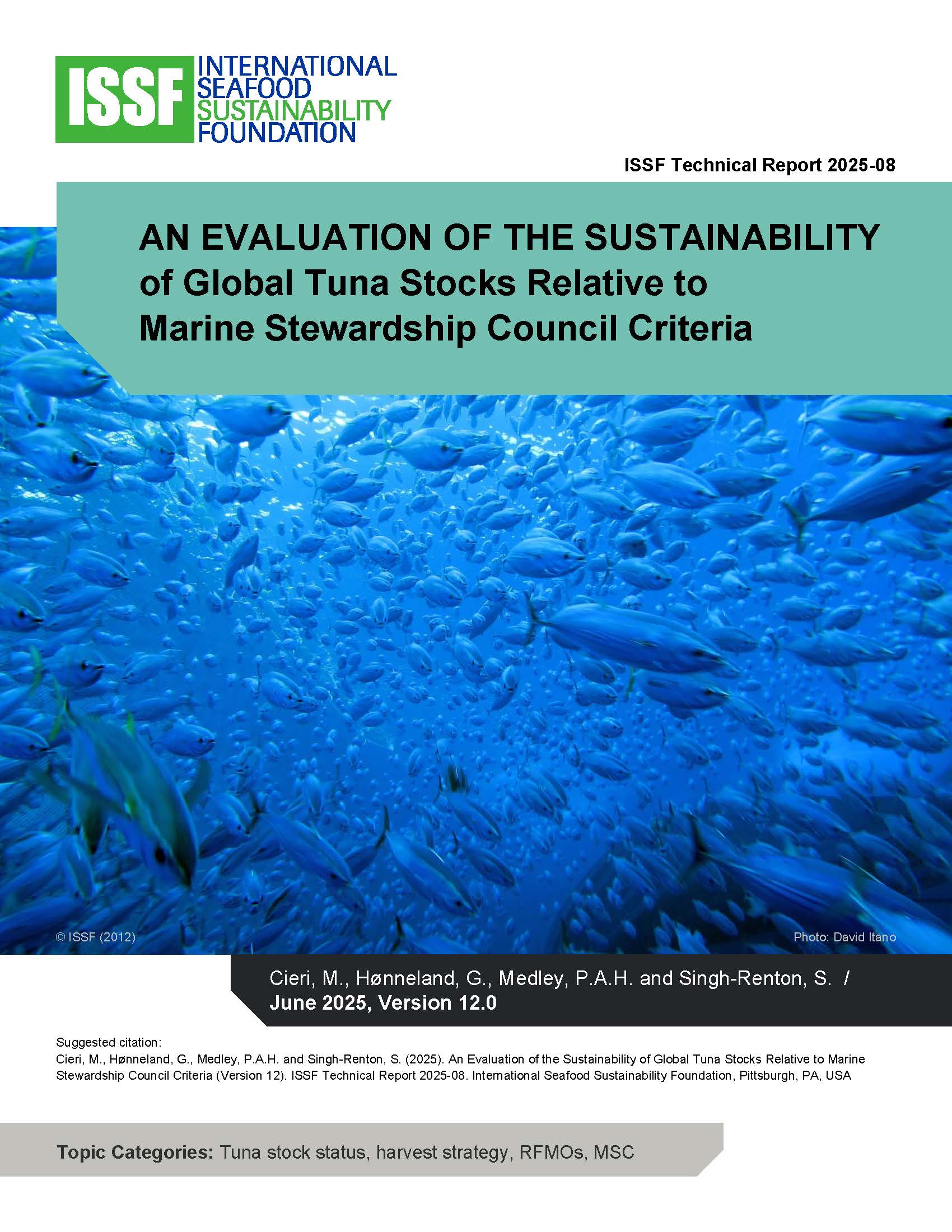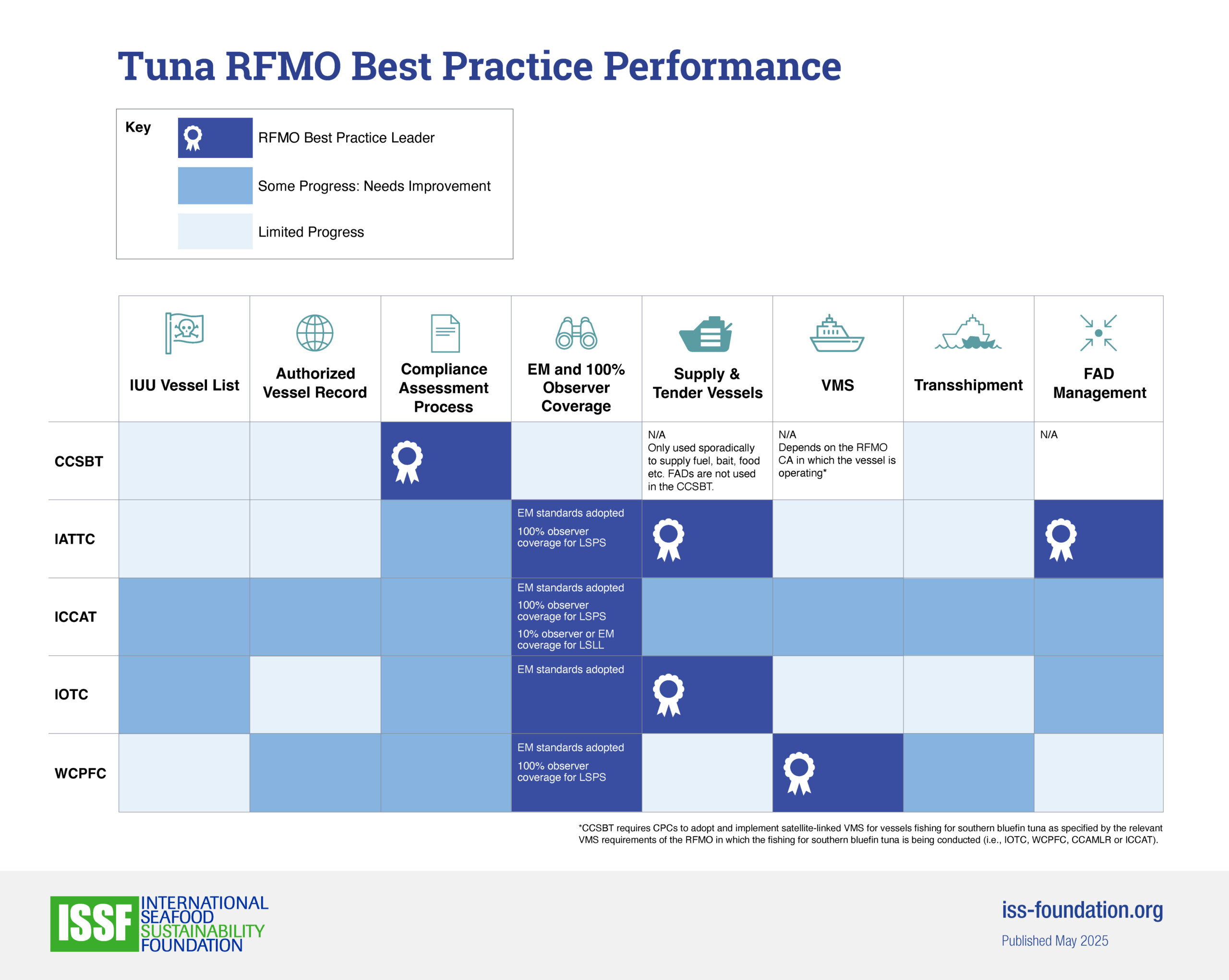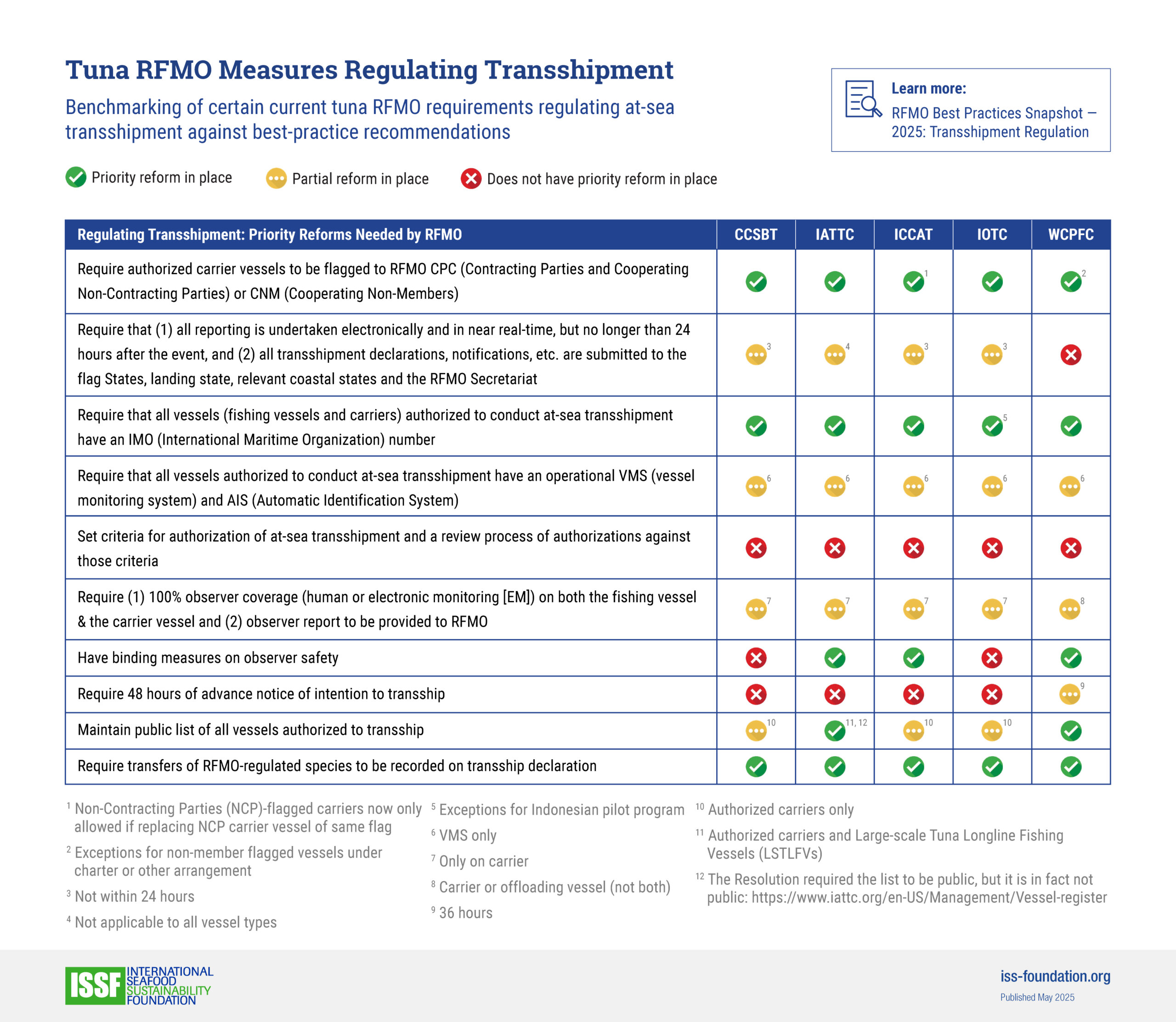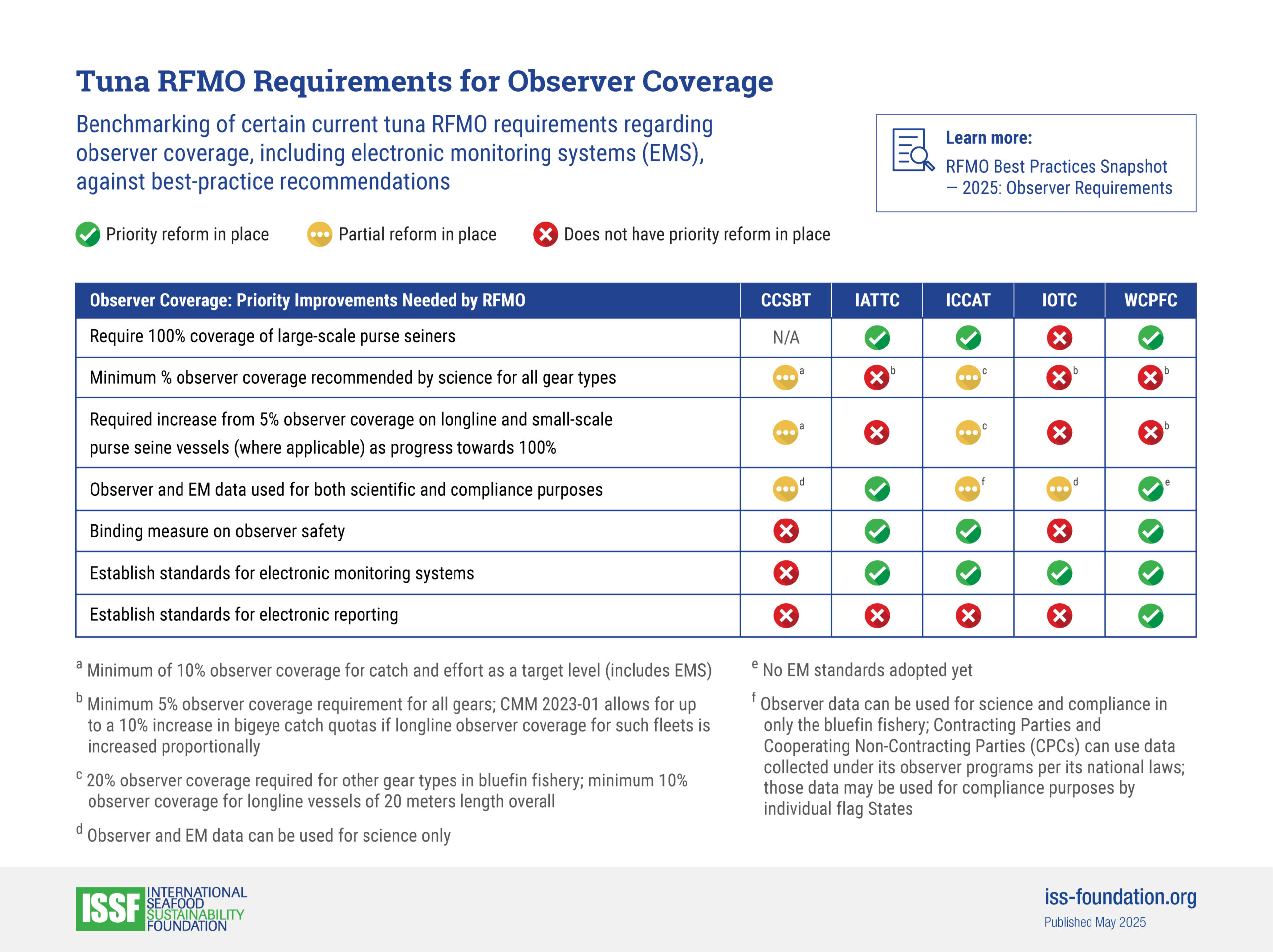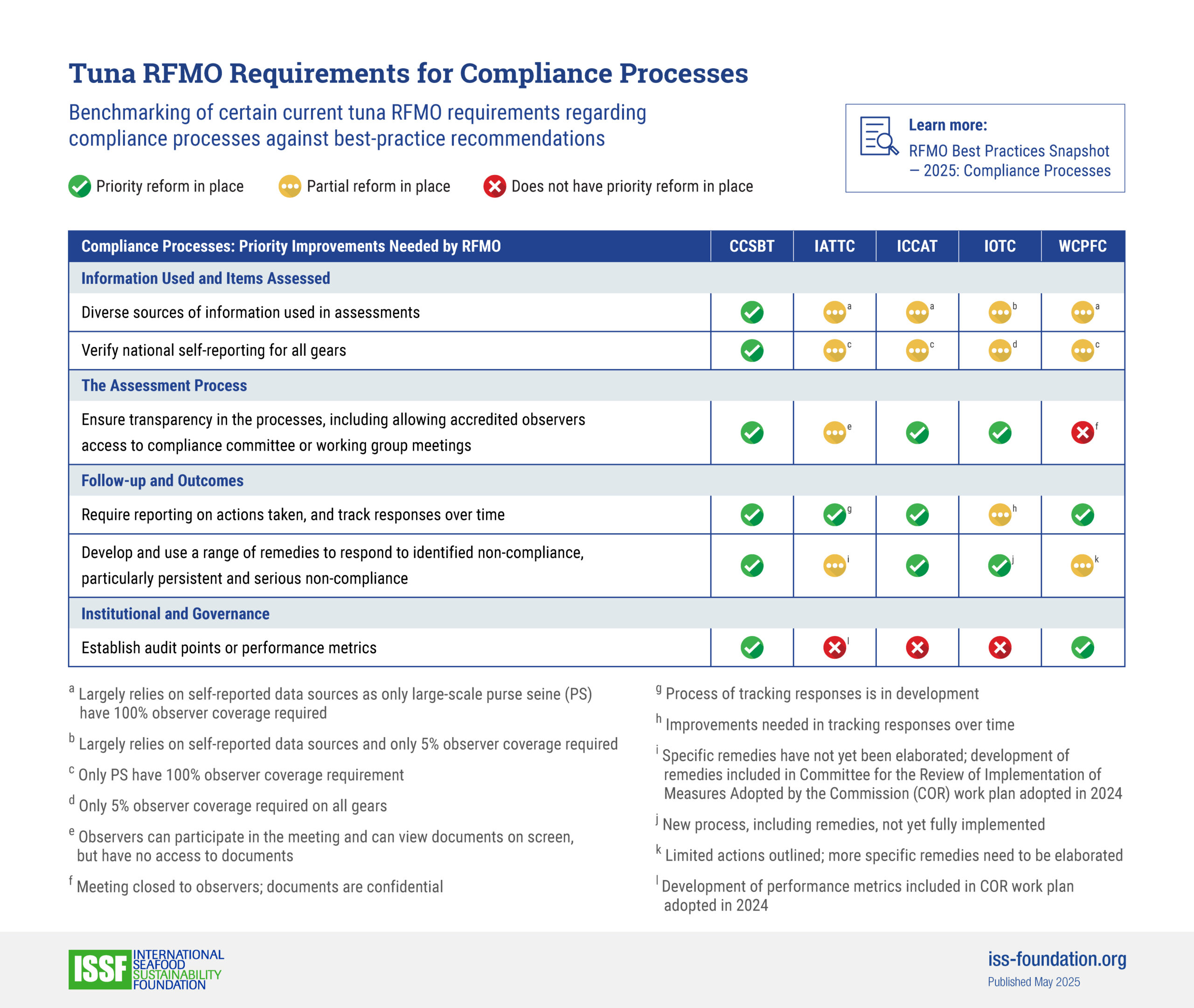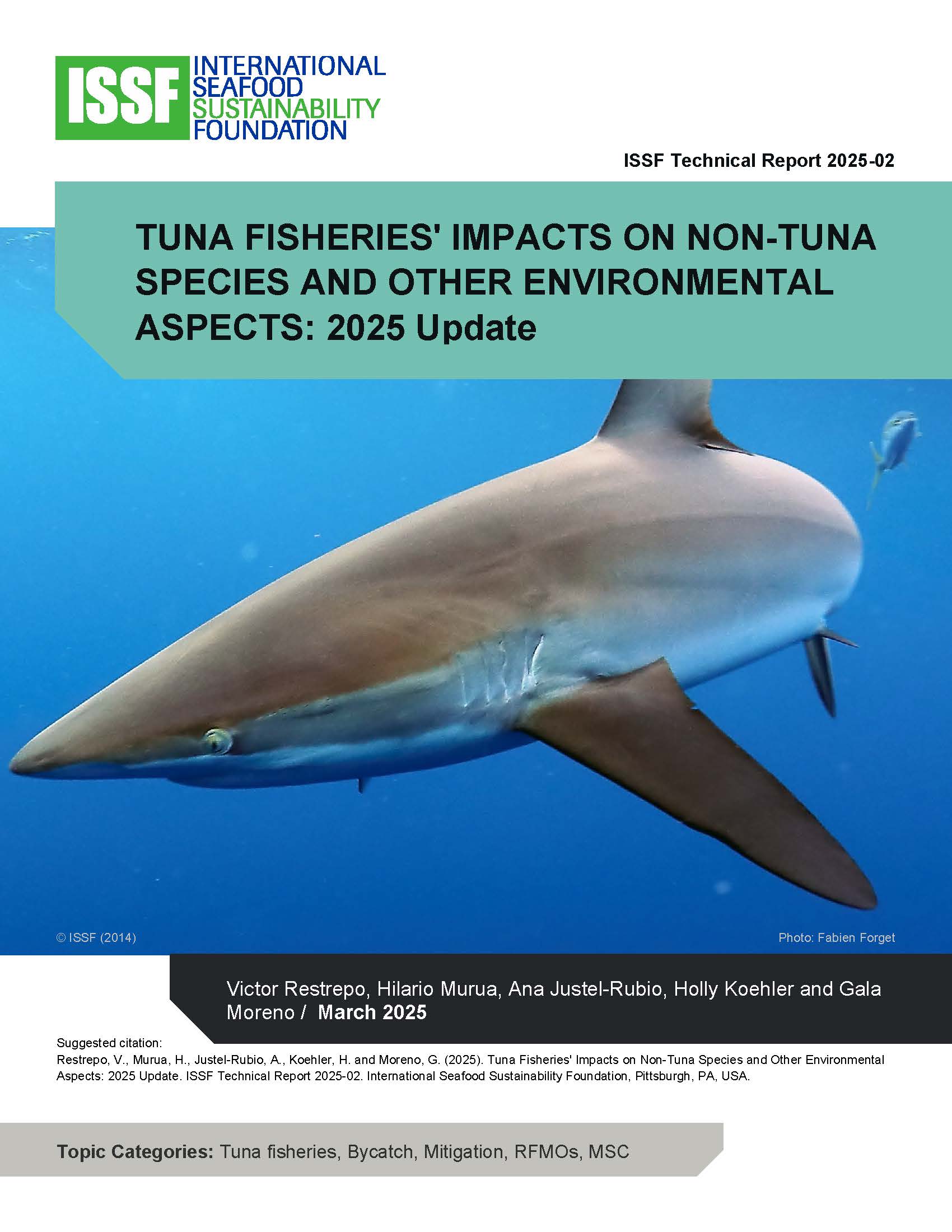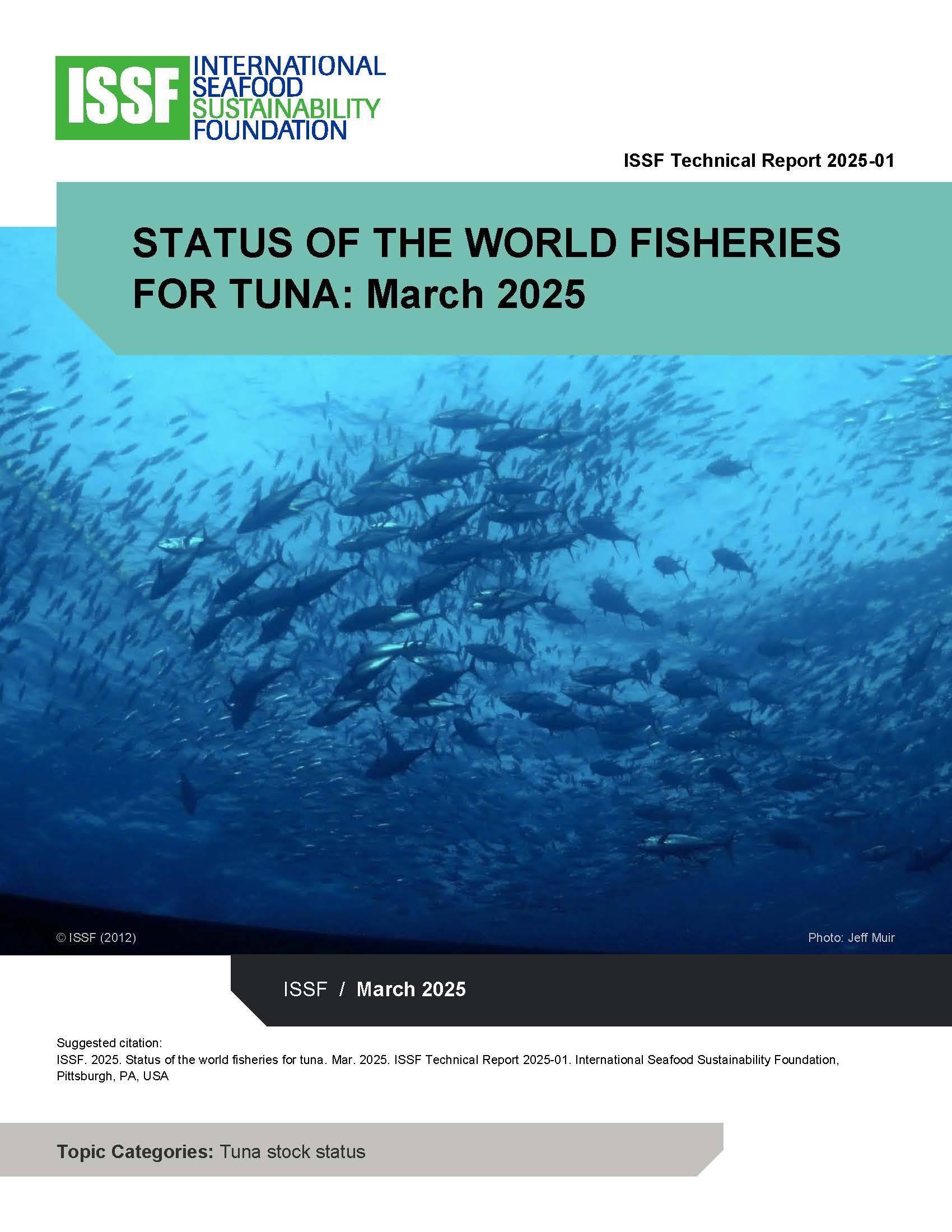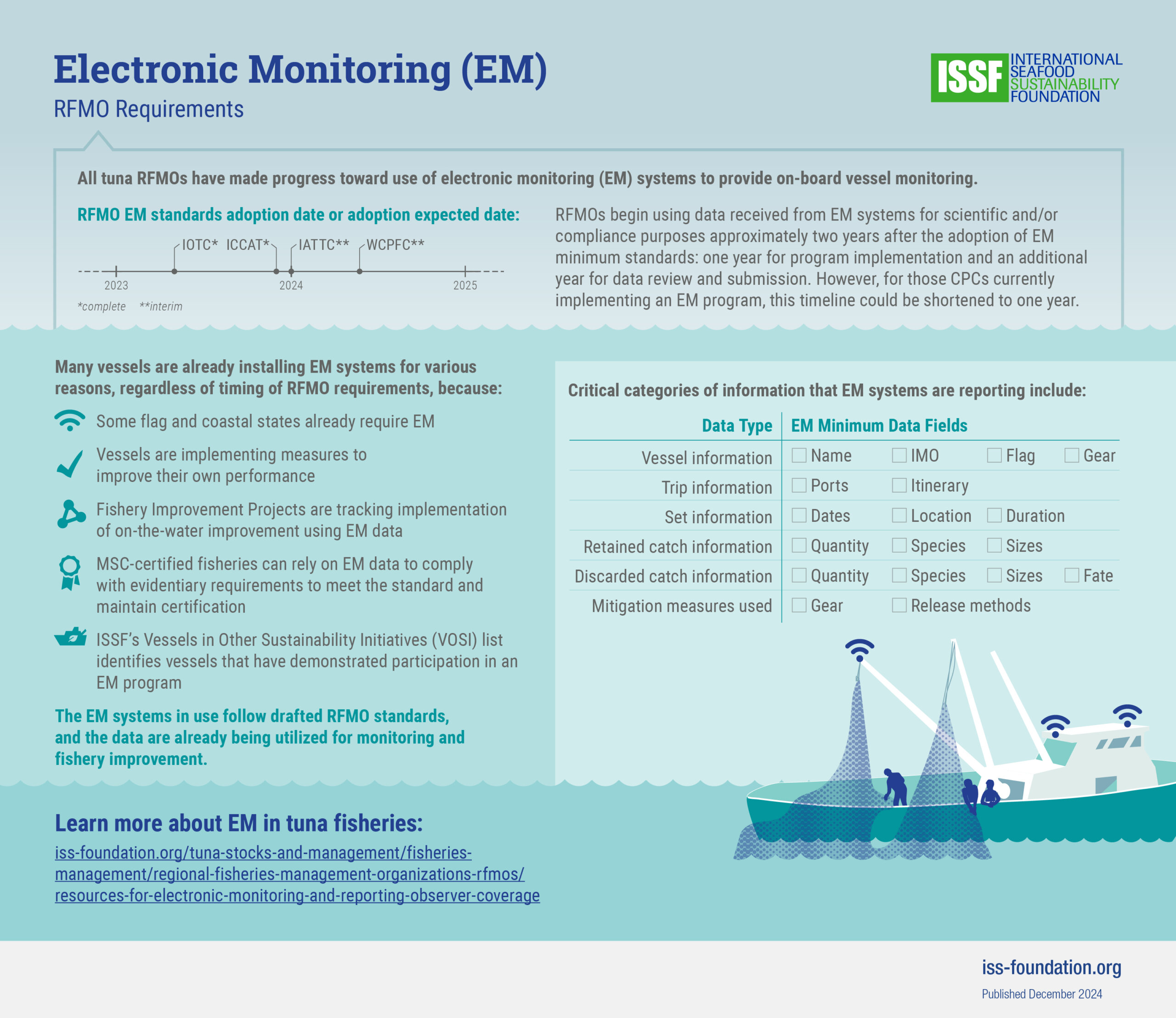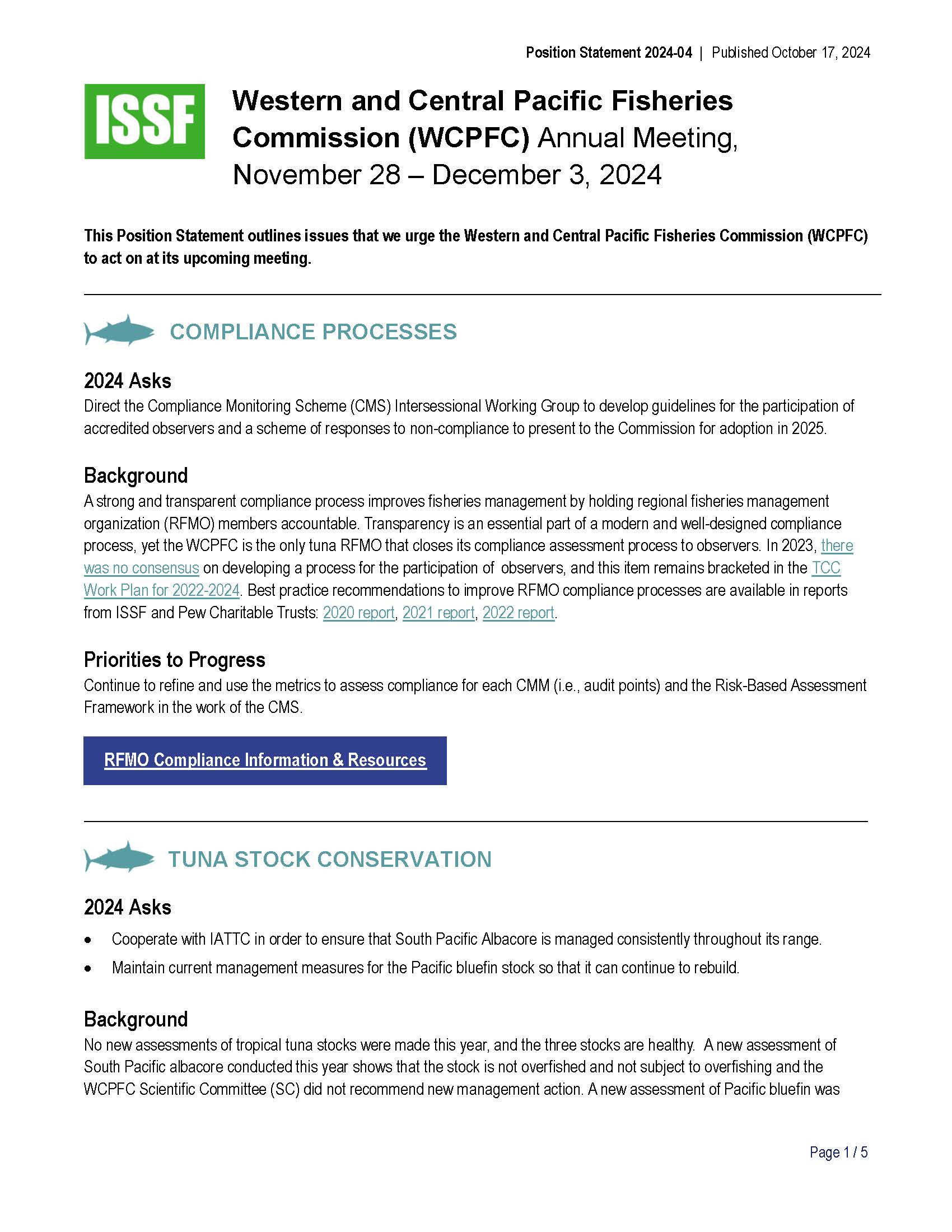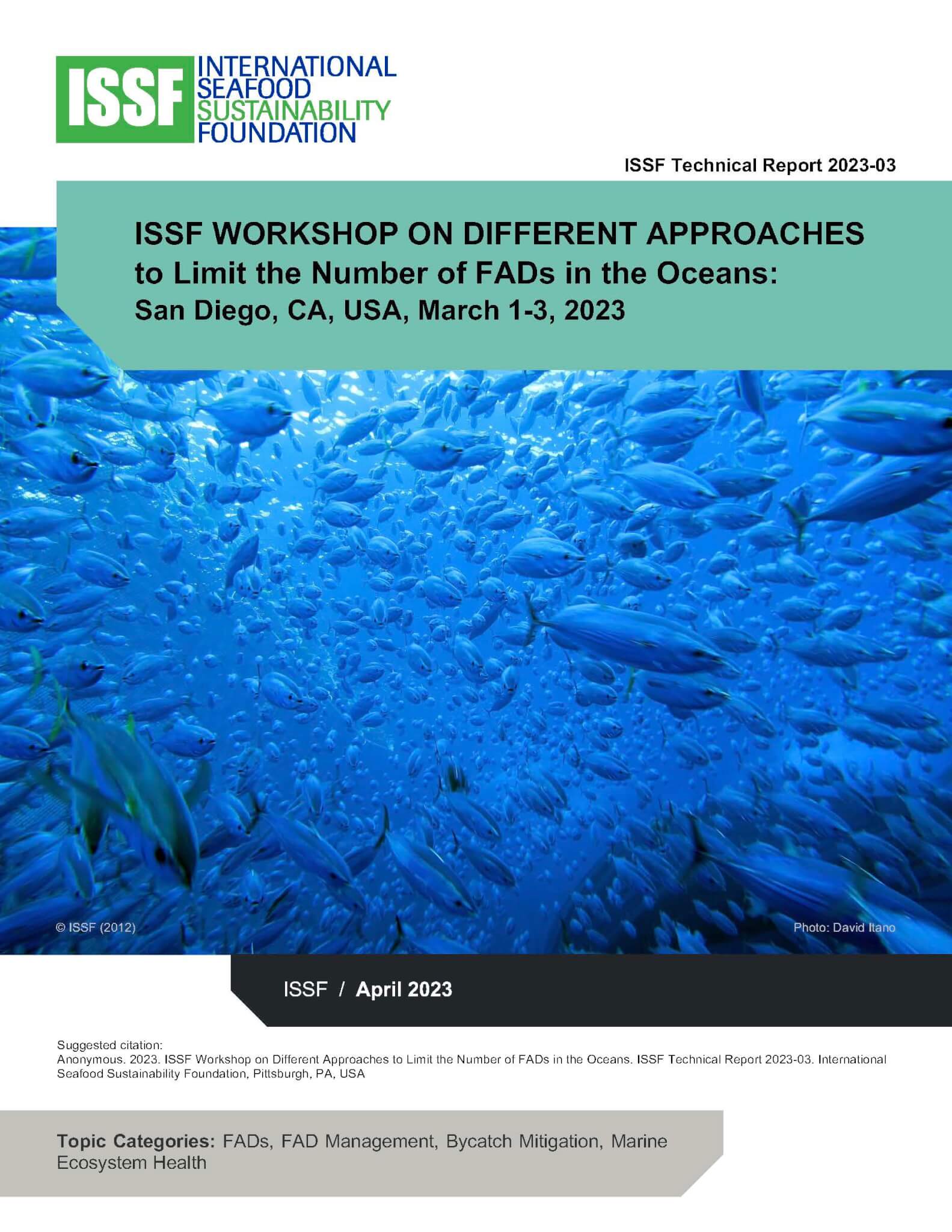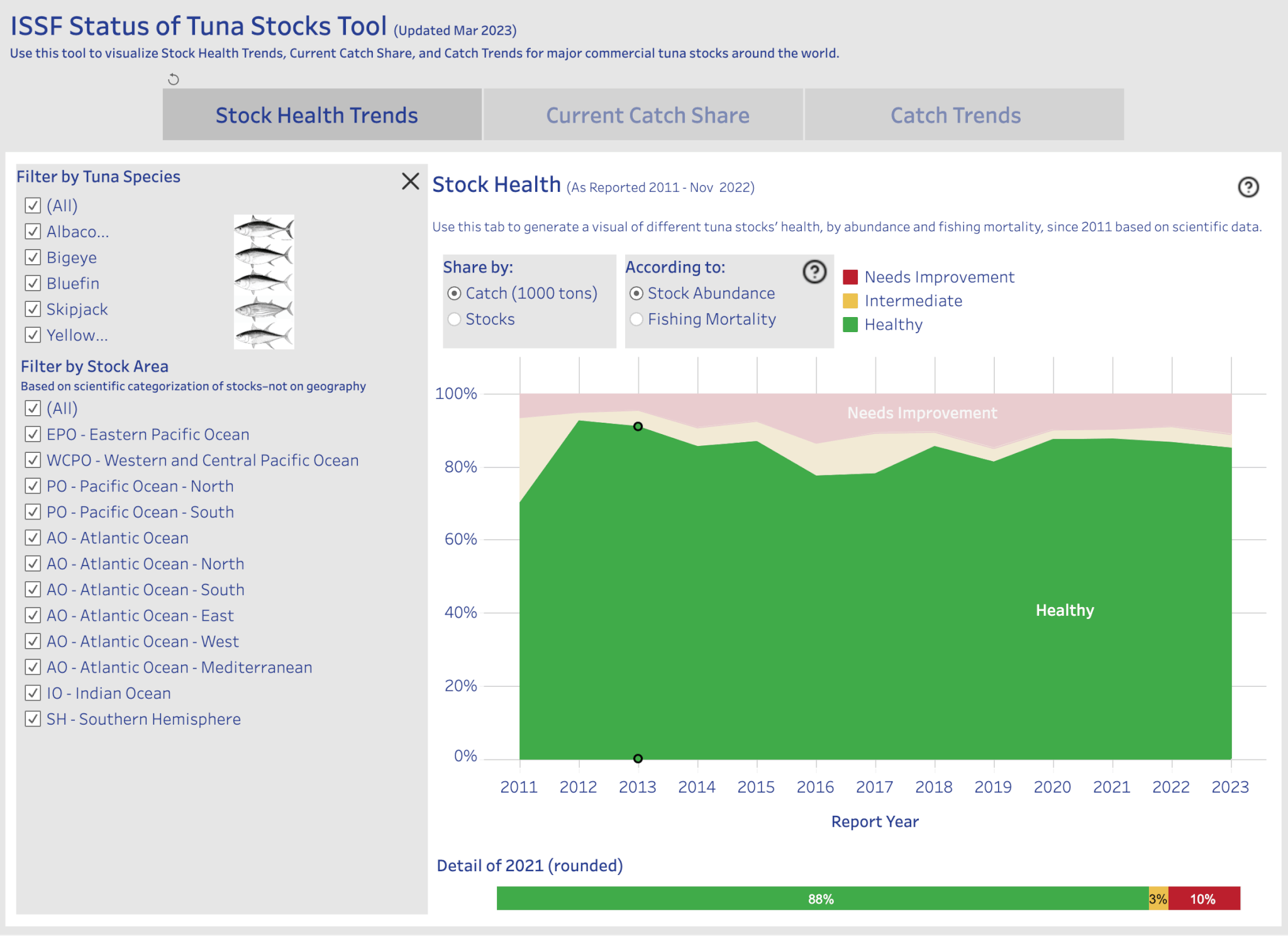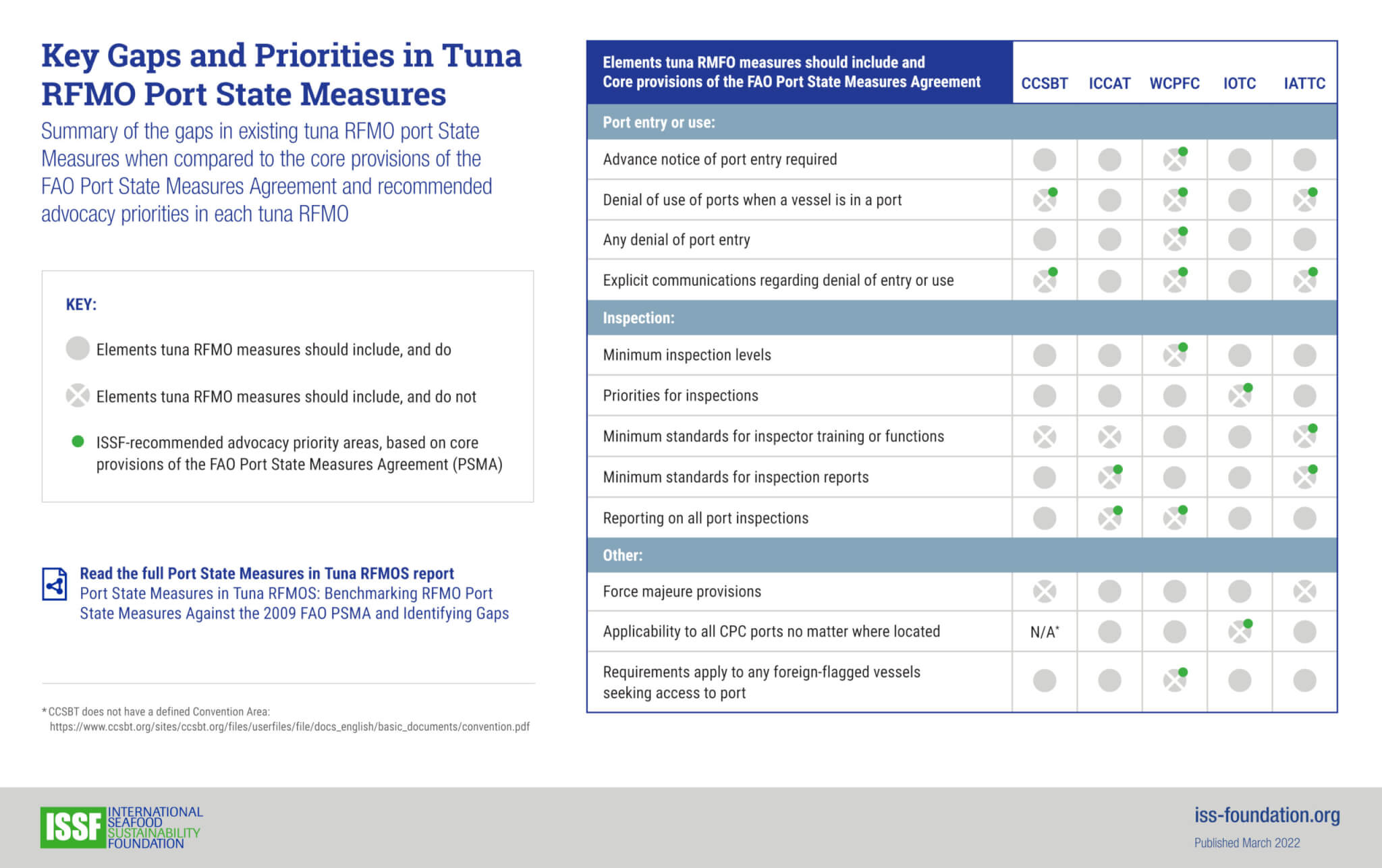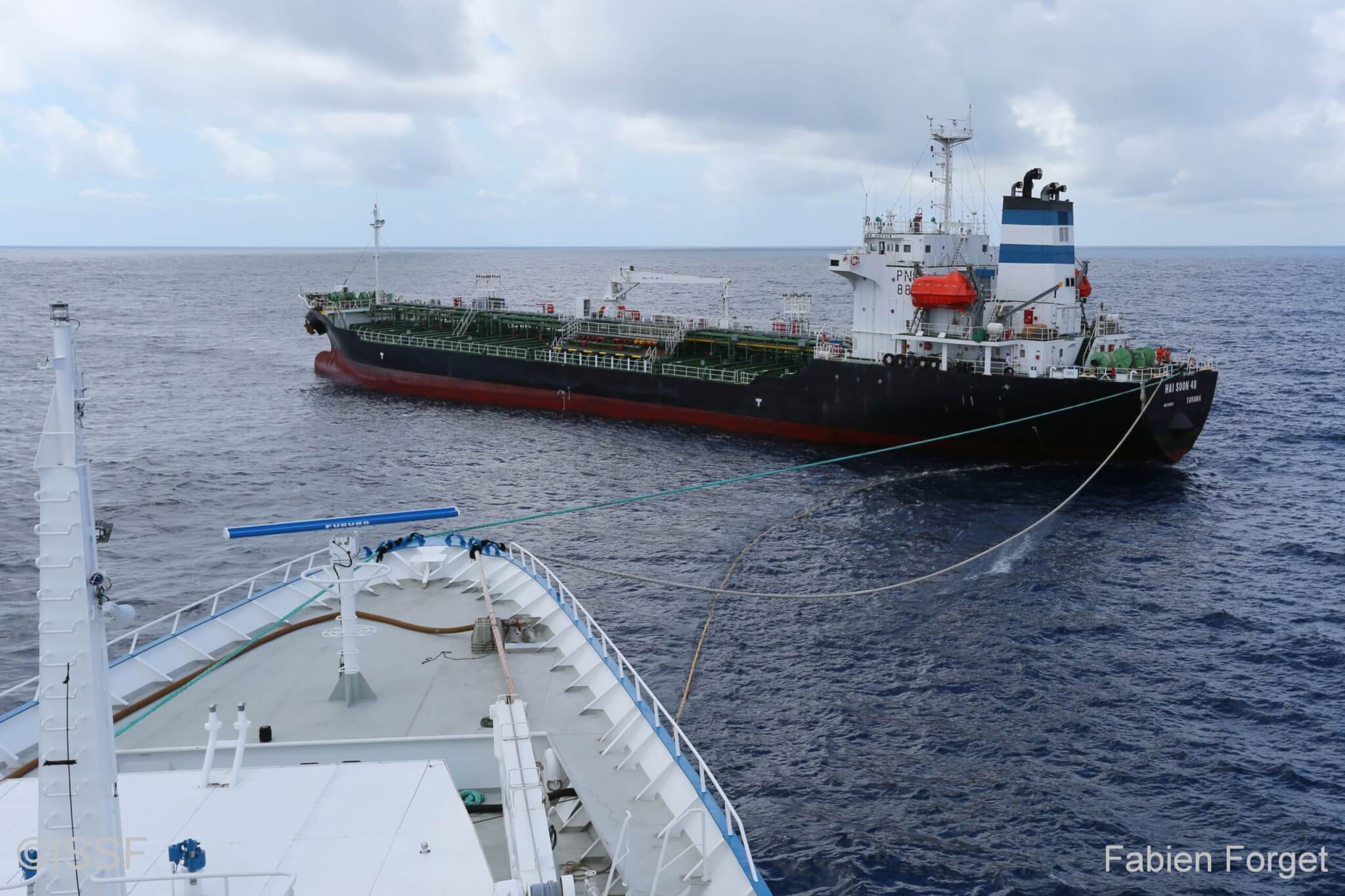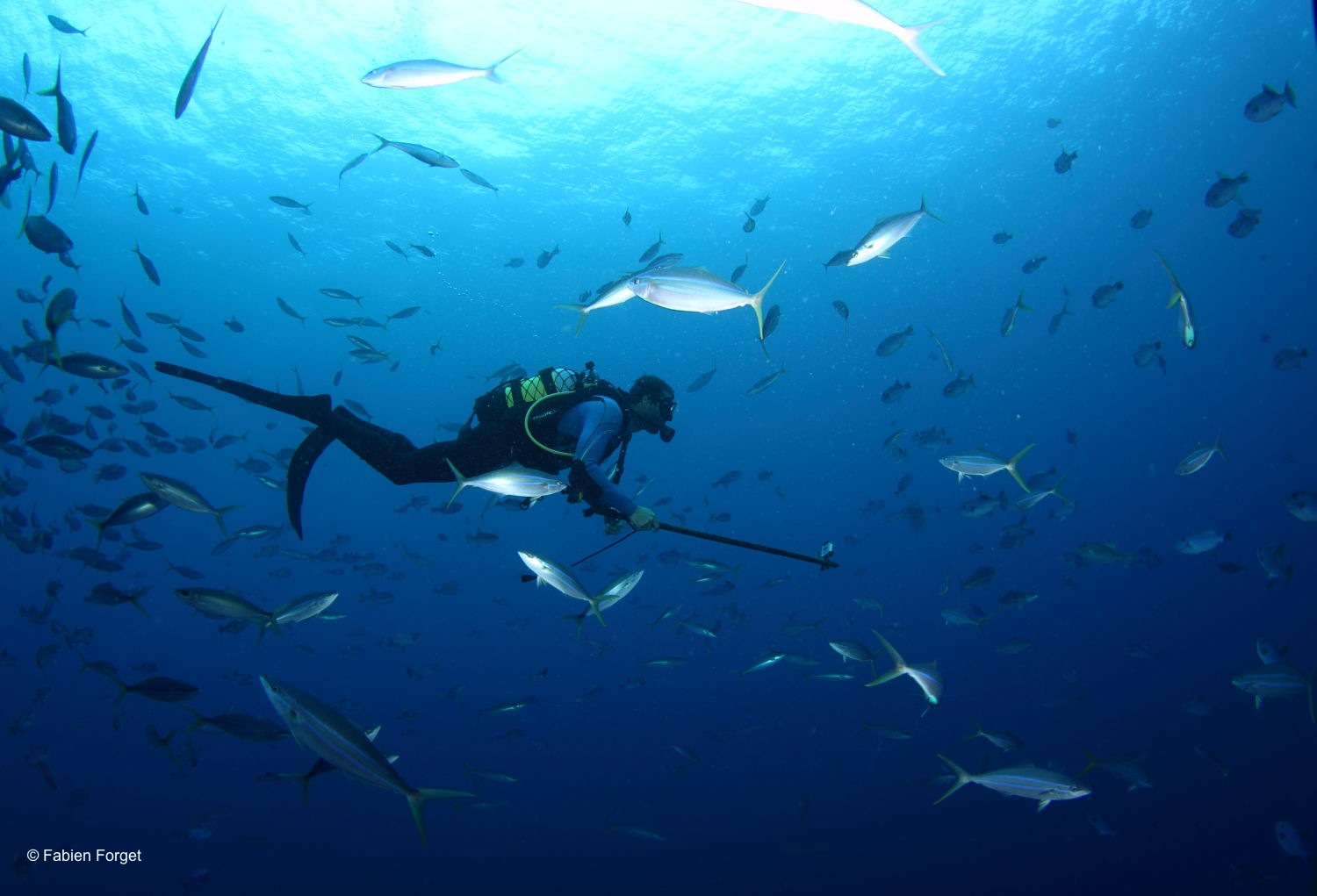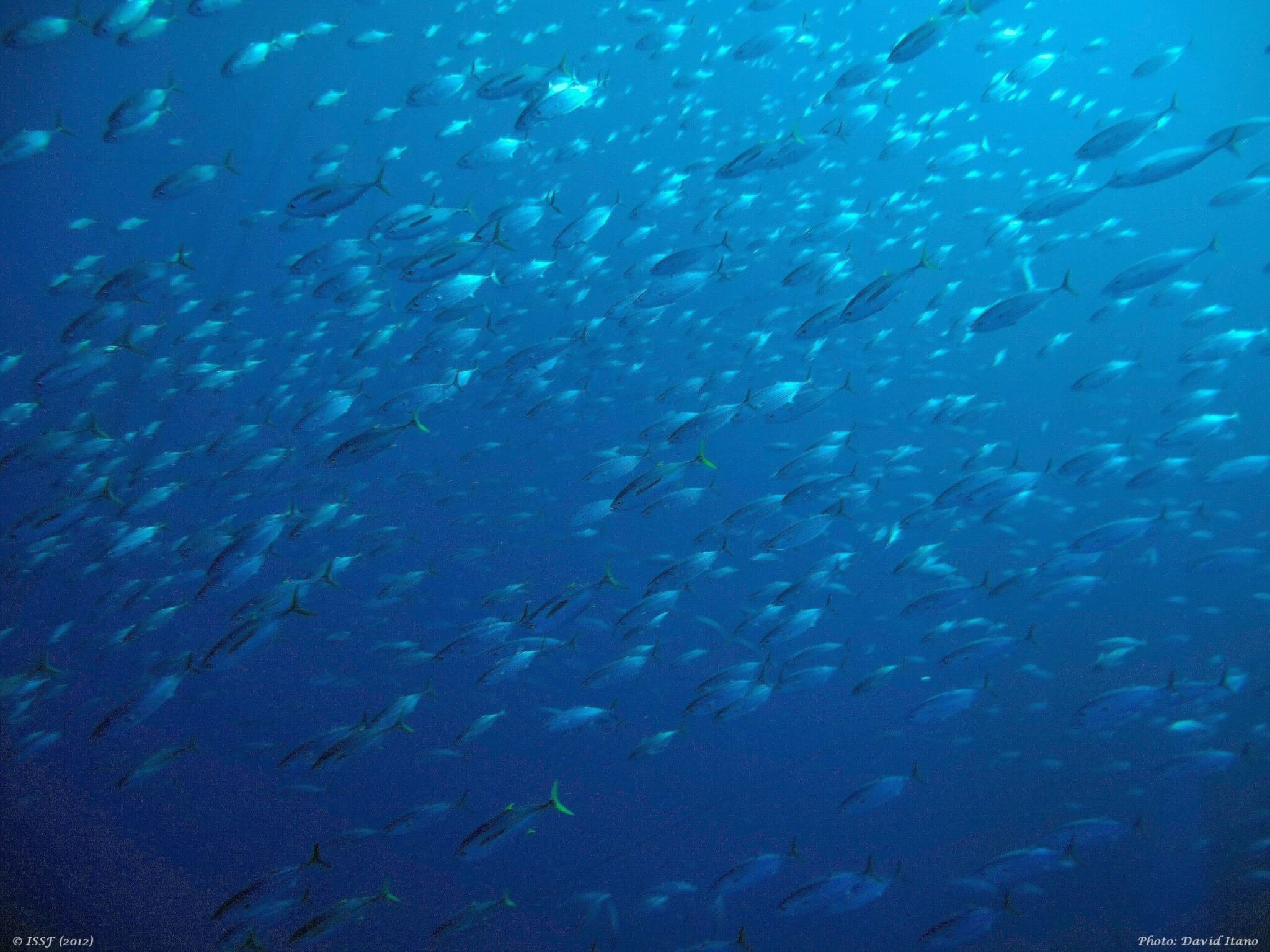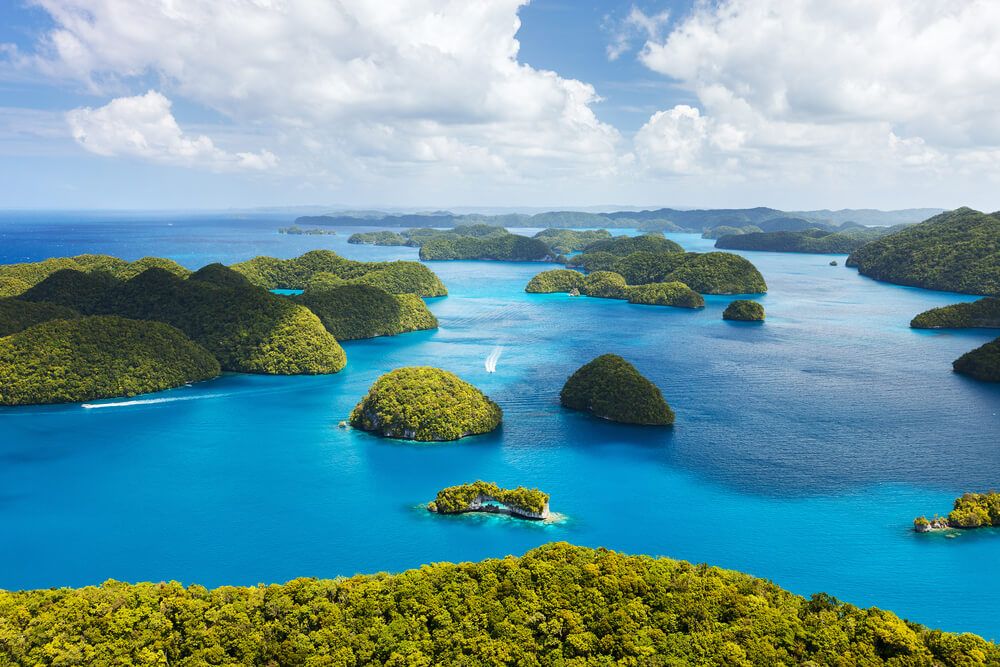
Western and Central Pacific Fisheries Commission (WCPFC)
The Western and Central Pacific Fisheries Commission (WCPFC) is governed by the 1982 Convention and the Agreement (The Law of the Sea and UNFSA) and is responsible for the management of tuna and tuna-like species in the Pacific Ocean west of 150ºW to the north of 4ºS and waters west of 130ºW to the south of 4ºS.
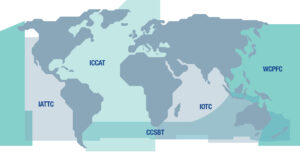
In 1979, the Forum Fisheries Agency (FFA) was established to collectively negotiate and harmonize Pacific island states’ control over tuna species within the 200-mile Exclusive Economic Zones created by the United Nation’s Convention of the Law of the Sea. From the FFA, WCPFC was established in 2004 to conserve and manage highly migratory fish stocks in the western and central Pacific Ocean.
RFMO Progress
In our annual report, Science Leads the Way, we summarize tuna RFMO sustainability successes in 2024.
Stock Status & Management Measures
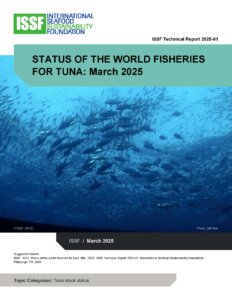
- ISSF benchmarks the tuna-fishery policies of WCPFC and other tuna RFMOs to a series of best practices we document in reports and “snapshots.”
- We also issue detailed position statements for each RFMO to help guide decision-making at their annual meetings, which ISSF scientists and policy experts often attend.
- In addition, we produce a “Status of the Stocks” report, which summarizes and rates the status and management of 23 major commercial tuna stocks, and an “Interactive Stock Status and Catch” tool.
- Our report ISSF 2025-02: Tuna Fisheries’ Impacts on Non-Tuna Species and Other Environmental Aspects: 2025 Update* examines the effects of different tuna-fishing methods, summarizing each RFMO’s related management measures for protecting both non-tuna and Endangered, Threatened, and Protected (ETP) species.
WCPFC OVERVIEW
See a list of nations that are members of WCPFC.
Article 2: “… the long-term conservation and sustainable use of highly migratory fish stocks in the western and central Pacific Ocean in accordance with the 1982 Convention and the Agreement [The Law of the Sea and UNFSA].”
Article 5: “… ensure that such measures are based on the best scientific evidence available and are designed to maintain or restore stocks at levels capable of producing maximum sustainable yield, as qualified by relevant environmental and economic factors, including the special requirements of developing States in the Convention Area, particularly small island developing States, and taking into account fishing patterns, the interdependence of stocks and any generally recommended international minimum standards, whether subregional, regional or global.”
- Cetaceans
- Swordfish
- Striped marlin
- Sharks
- Seabirds
- Sea turtles
New members would have to be countries located in the Convention Area (coastal States) or invited to accede by a consensus of the Commission.
The WCPFC has clear legal authority to deal with all aspects of conservation and management of fish stocks in the western and central Pacific Ocean. The WCPFC conducts scientific studies through its Scientific Committee (SC) and a Technical and Compliance Committee (TCC). Scientists of the Secretariat of the Pacific Community’s Oceanic Fisheries Program (OFP) are responsible for leading much of the scientific research utilized by the committees. The Scientific Committee is also required to work closely with the IATTC, particularly in areas of overlap, as well as with the International Scientific Committee (ISC).
Because of differences over how tunas should be managed in the northern portion of WCPFC’s jurisdiction, a Northern Committee was established to deal with management and conservation issues north of the 20° N.
The Commission is required to assess the impacts of fishing, other human activities and environmental factors on non-target species, and species belonging to the same ecosystem or dependent upon or associated with the target stocks. In addition, there is an explicit requirement to apply the Precautionary Approach (as described by UNFSA) in adopting conservation and management measures.
The Secretariat of the Pacific Community’s (SPC’s) Oceanic Fisheries Programme (http://www.spc.int/oceanfish/) serves as the Commission’s Science Services Provider and Data Manager. As the SPC started collecting fisheries data and conducting biological studies and stock assessments before WCPFC was established, this relationship minimizes duplication of effort between the two organizations. The WCPFC has a Scientific Committee (SC) composed of representatives from each Commission member. The SC reviews the assessment results and related information prepared by SPC and by other SC experts and makes recommendations for management actions based on these assessments.
The International Scientific Committee for Tuna and Tuna-like Species in the North Pacific Ocean (ISC, http://isc.ac.affrc.go.jp/) provides scientific advice for species that inhabit the Pacific Ocean in waters generally North of 20°N, inside and outside the Convention Area (e.g., North Pacific albacore and Pacific bluefin).
Decisions taken by WCPFC are generally done by consensus. In cases where decisions have to be taken by vote, usually on substantive matters, a “two-chamber system” applies. The Pacific Islands Forum Fisheries Agency (FFA) members of the Commission comprise one chamber, while the non-FFA members form the other chamber. Decisions are taken by a three-fourths majority of those present and voting in each chamber and no proposal can be defeated by two or fewer votes in either chamber. Decisions that are binding to Commission members are called “Conservation and Management Measures (CMMs)”. In respect of stocks occurring primarily north of 20°N (the so-call “northern stocks”), management decisions by the Commission are based on recommendations of the Northern Committee. Currently, North Pacific albacore, Pacific bluefin and North Pacific swordfish are recognized as “northern stocks.”
- The FFA (http://www.ffa.int) was created in 1979, recognizing that the 200-mile extension of EEZ jurisdiction would result in most of the tuna resources of the WCPO falling within the EEZs of Pacific island states. The FFA deals with registration and licensing arrangements and implements monitoring and enforcement capabilities. The FFA maintains a regional register of foreign fishing vessels that are eligible to apply for access licenses for fishing in the EEZs of the FFA members.
- The Nauru Agreement Concerning Cooperation in the Management of Fisheries of Common Interest, which entered into force in 1982, has the objective of coordinating and harmonizing the management of fisheries with regard to common stocks within the EEZs of the eight Contracting Parties (which account for roughly 25% of the world’s tuna catch). The Parties to the Nauru Agreement (PNA, http://www.pnatuna.com/) grant priority to fishing vessels of the Parties and establish uniform terms and conditions under which the Parties may license foreign fishing vessels, and have adopted a set of conservation measures that apply to all vessels licensed and operating under the PNA Vessel Day Scheme (e.g., 100% observer coverage, crewing requirements, VMS, etc.). In 2010 the PNA established its own offices in Majuro, Marshall Islands.
ISSF CONTRIBUTIONS
“ISSF Welcomes Strong Outcomes for Western and Central Pacific Ocean Tuna Fisheries at Management Meeting, including the Adoption of Minimum Standards for Electronic Monitoring” (December 4, 2024 blog)
“At Annual WCPFC Meeting, Pacific Fisheries Managers Must Boost Monitoring and Stock Sustainability” (November 12, 2024 blog)
“Uneven Outcomes for Western and Central Pacific Ocean Tuna Fisheries at Management Meeting” (December 12, 2023 blog)
RELATED RESOURCES
-
WCPFC Quick Links
WCPFC at a Glance
Established: 2004
Headquarters: Kolonia, Pohnpei State, Federated States of Micronesia
Area of Competence: Approximately, Pacific Ocean waters West of 150°W to the North of 4°S and waters West of 130°W to the South of 4°S (WPO)
Tuna Catches in WCPFC’s Region
Use our “Interactive Stock Status and Catch Tool” to visualize the current tuna catch — and catch trends over time — in the WCPFC region.
Download the data in different file formats, and generate custom graphics to share via email, X, or Facebook.
FIPs in WCPFC’s Region
Browse our Tuna FIPs list to find Fishery Improvement Projects in WCPFC’s ocean region — or any other tuna RFMO region.
